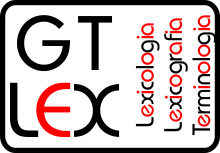Study of the integration of the lexical unit “placenta” in the Portuguese lexicon
DOI:
https://doi.org/10.14393/Lex-v8a2023/24-4Keywords:
Etymology, Neology, Terminology of Biology, TermAbstract
The objective of this study is to describe the integration of the lexical unit placenta in the Portuguese language, for the elaboration of the entry placenta of the Historical Dictionary of Biological Terms (Maroneze; Rio-Torto, 2023). For this, we present a theoretical-methodological discussion about Etymology and Neology, understanding that the integration of a lexical unit involves the description of the moment when it was considered a neologism. Thus, we describe the uses of placenta in ancient Latin and in modern and scientific Latin, showing how its meaning changed from “flat pie or cake” to “organ of pregnancy”. Next, we present the first occurrences of the unit in the Portuguese language, highlighting its neological uses (at the beginning of the 18th century), until the moment when it ceases to be perceived as a novelty, with its insertion in lexicographical works (end of the 18th century) and the formation of derivatives (19th and 20th centuries). Finally, we present the summarized diachronic path and the proposal for an entry that will integrate the aforementioned dictionary.
Downloads
References
ALVES, I. M. Neologismo: criação lexical. 3 ed. São Paulo: Ática, 2007.
ALVES, I. M. O conceito de neologia: da descrição lexical à planificação linguística. Alfa, São Paulo, v. 40, 1996. Disponível em: https://periodicos.fclar.unesp.br/alfa/article/view/3992. Acesso em: 20 set. 2023.
BARBOSA, M. A. Aspectos da dinâmica do neologismo. Língua e literatura, n. 7, 1978. Disponível em: https://www.revistas.usp.br/linguaeliteratura/article/view/138126. Acesso em: 28 jul. 2023. DOI https://doi.org/10.11606/issn.2594-5963.lilit.1978.138126
BLUTEAU, R. Vocabulario Portuguez e Latino. (vol. T-Z) Lisboa Occidental: na Officina de Paschoal da Sylva, 1721. Disponível em: https://www.google.com.br/books/edition/Vocabulario_portuguez_latino/RwGCgmERezIC. Acesso em: 07 jun. 2023.
CÂMARA Jr., J. M. História e estrutura da língua portuguesa. 2. ed. Rio de Janeiro: Padrão, 1976.
CATÃO, M. P. Da agricultura. Tradução, apresentação e notas: Matheus Trevizam. Campinas: Ed. Unicamp, 2016.
COLOMBO, R. De Re Anatomica libri XV. Venetiis: Ex typographia N. Beuilacquae, 1559. Disponível em: https://books.google.com.br/books?id=bOJlUzIWOowC. Acesso em: 15 ago. 2023.
FALLOPPIO, G. Observationes anatomicae. Coloniae: Apud haeredes Arnoldi Birckmanni, 1562. Disponível em: https://www.google.com.br/books/edition/Observationes_anatomicae/_gk8AAAAcAAJ. Acesso em: 16 ago. 2023.
FIGUEIREDO, C. de. Novo Diccionário da Língua Portuguesa. 4. ed. Lisboa: Portugal-Brasil Sociedade Editora, 1926.
GRÉCO, G. (dir.) Gaffiot 2016. Disponível em: https://gaffiot.fr. Baseado em: GAFFIOT, F. Dictionnaire Latin-Français. Paris: Hachette, 1934.
HELANDER, H. On neologisms in Neo-Latin. In: FORD, P.; BLOEMENDAL, J.; FANTAZZI, C. (ed.) Brill’s Encyclopaedia of the Neo-Latin World. Leiden: Brill, 2014. p. 37-54.
HENRIQUES, F. da F. Medicina Lusitana, Soccorro Delphico. Amsterdam: em caza de Miguel Diaz, 1731. Disponível em: https://www.google.com.br/books/edition/Medicina_Lusitana_soccorro_Delphico_a_os/SaliAAAAcAAJ. Acesso em: 16 ago. 2023.
HOUAISS, A.; VILLAR, M. Grande dicionário Houaiss da língua portuguesa. Rio de Janeiro: Instituto António Houaiss, 2012. Disponível em: http://houaiss.uol.com.br. Acesso em: 16 ago. 2023.
KNIGHT, S; TILG, S. The Oxford Handbook of Neo-Latin. Oxford: OUP, 2015. DOI https://doi.org/10.1093/oxfordhb/9780199948178.001.0001
KRIEGER, M. da G.; FINATTO, M. J. B. Introdução à Terminologia: teoria e prática. São. Paulo: Contexto, 2004.
LIDDELL, H. G.; SCOTT, R.; JONES, H. S. A Greek-English Lexicon. Oxford University Press, 1940. Disponível em: https://stephanus.tlg.uci.edu/lsj/#eid=1. Acesso em: 28 jul. 2023.
MARONEZE, B. O.; ALVES, I. M. Neologia: histórico e perspectivas. Revista GTLex, [S.l.], v. 4, n. 1, p. 6–32, 2020. Disponível em: https://seer.ufu.br/index.php/GTLex/article/view/55082. Acesso em: 5 jul. 2022. DOI https://doi.org/10.14393/Lex7-v4n1a2018-1
MARONEZE, B.; RIO-TORTO, G. A elaboração de um dicionário terminológico histórico com recursos digitais. Revista LaborHistórico, v. 9, n. 1, e52387, 2023. Disponível em: https://revistas.ufrj.br/index.php/lh/article/view/52387/32319. Acesso em: 5 ago. 2023. DOI https://doi.org/10.24206/lh.v9i1.52387
MORAES SILVA, A. de. Diccionario da Lingua Portugueza composto pelo padre D. Rafael Bluteau. Lisboa: Na Officina de Simão Thaddeo Ferreira, 1789. Disponível em: https://www.google.com.br/books/edition/Diccionario_da_lingua_portugueza_Compost/jw35ZrdRyngC. Acesso em: 16 ago. 2023. DOI https://doi.org/10.14393/DL50-v16n2a2022-6
OXFORD Latin Dictionary. Oxford: Clarendon Press, 1968.
PIZZI, M.; FASSAN, M.; CIMINO, M.; ZANARDO, V.; CHIARELLI, S. Realdo Colombo’s De Re Anatomica: The renaissance origin of the term “placenta” and its historical background. Placenta, v. 33, n. 8, ago., p. 655-657, 2012. Disponível em: https://www.sciencedirect.com/science/article/pii/S0143400412001257. Acesso em: 15 ago. 2023. DOI https://doi.org/10.1016/j.placenta.2012.03.004
SANTUCCI, B. Anatomia do corpo humano…. Lisboa Occidental: na Officina de Antonio Pedrozo Galram, 1739. Disponível em: https://books.google.com.br/books/about/Anatomia_do_corpo_humano.html?id=D83JL7ybBeUC&redir_esc=y. Acesso em: 19 ago. 2023.
SCHMIDT, S. Tractatus de Paschate. Francofurti ad Moenum: Impensis Johannis Davidis Zunneri, 1685. Disponível em: https://www.google.com.br/books/edition/Tractatus_de_Paschate_altero_Veteris_Tes/RuBmAAAAcAAJ. Acesso em: 16 ago. 2023.
TILING, M. De Placenta Uteri Disquisitio Anatomica. Rinthelii: Impensis Thomae Henrici Hauensteinii, 1672. Disponível em: https://www.google.com.br/books/edition/Matthi%C3%A6_Tilingii_Med_U_Doct_Prof_Public/JH1VAAAAcAAJ. Acesso em: 16 ago. 2023.
TRÉSOR de la Langue Française informatisé. s/d. Disponível em: http://atilf.atilf.fr/. Acesso em: 20 set. 2023.
Verbete plăcintă. In: Wikipedia. The Free Encyclopedia. Disponível em: https://en.wikipedia.org/wiki/Pl%C4%83cint%C4%83. Acesso em: 28 jul. 2023.
VIARO, Mário Eduardo. Etimologia. São Paulo: Contexto, 2011.
VIEIRA, D. Grande Diccionario Portuguez ou Thesouro da Lingua Portugueza. Quarto volume. Porto: Ernesto Chadron e Bartholomeu F. de Moraes, 1873.
Downloads
Published
How to Cite
Issue
Section
License
Copyright (c) 2023 Luana da Silva Borges, Bruno Oliveira Maroneze

This work is licensed under a Creative Commons Attribution-NonCommercial-NoDerivatives 4.0 International License.
Autores que publicam nesta revista concordam com os seguintes termos:
CC BY-NC-ND 4.0: Autores mantém os direitos autorais e concedem à revista o direito de primeira publicação, com o trabalho simultaneamente licenciado sob a Creative Commons Attribution License que permitindo o compartilhamento do trabalho com reconhecimento da autoria do trabalho e publicação inicial nesta revista.
Autores têm autorização para assumir contratos adicionais separadamente, para distribuição não-exclusiva da versão do trabalho publicada nesta revista (ex.: publicar em repositório institucional ou como capítulo de livro), com reconhecimento de autoria e publicação inicial nesta revista.









